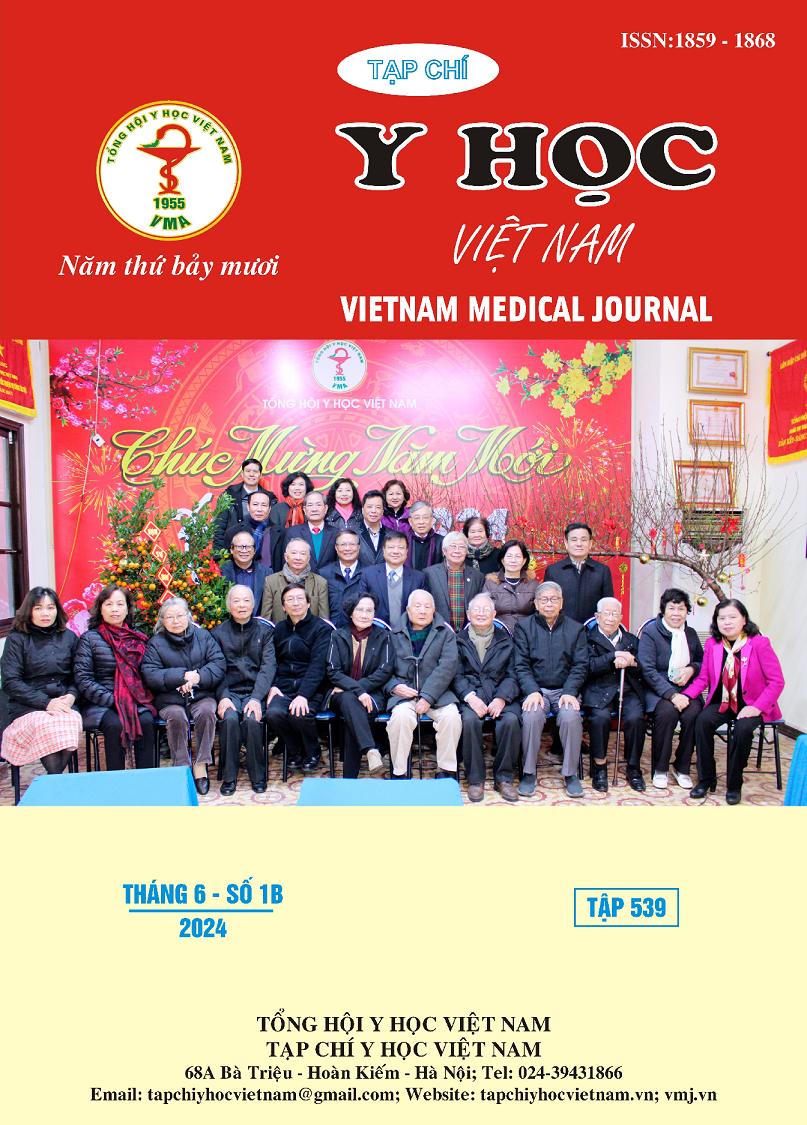HEMODILATION EFFECTIVENESS AND RELATED FACTORS IN PEOPLE WITH KIDNEY DISEASE RECEIVING PERIODIC HEMODILISATION AT REHABILITATION HOSPITAL - OCCUPATIONAL DISEASE TREATMENT
Main Article Content
Abstract
Objectives: To describe the efficacy of hemodialysis and related factors at the Hospital of Rehabilitation and Proffesional Disease in 2023. Methods: This cross-sectional study was conducted on 95 end-stage renal disease patients at the Hospital of Rehabilitation and Proffesional Disease from April 2023 to October 2023. Results: The study evaluated the demographic characteristics and hemodialysis efficacy of renal patients. The average age was 55.7, predominantly among patients aged 46-60 and over 60. The majority were male and unemployed. The average duration of hemodialysis was 25.7 months. Clinical indices showed an average hemoglobin of 10.7 g/dL, URR of 65.6%, and Kt/V of 1.4. Only 42.1% of patients achieved a Kt/V of 1.2 or higher, while 52.6% achieved a URR of 65% or higher. Statistical analyses indicated significant differences between methods of vascular access and several biochemical indices such as Ferritin and PTH (parathyroid hormone), suggesting correlations between clinical factors and treatment efficacy. Conclusion: Hemodialysis efficacy was moderate, with influencing factors including the method of vascular access, duration of dialysis, and levels of Ferritin and PTH.
Article Details
Keywords
Hemodialysis efficacy, chronic kidney disease, Kt/V, URR.
References
2. Liyanage T, Ninomiya T, Jha V, et al. Worldwide access to treatment for end-stage kidney disease: a systematic review. The Lancet. 2015;385(9981):1975-1982.
3. Hole B, Hemmelgarn B, Brown E, et al. Supportive care for end-stage kidney disease: an integral part of kidney services across a range of income settings around the world. Kidney international supplements. 2020;10(1):e86-e94.
4. Nguyễn VT, Nguyễn TTL. Hiệu quả lọc máu ở bệnh nhân bệnh thận mạn giai đoạn cuối chạy thận nhân tạo chu kỳ tại bệnh viện Hữu Nghị đa khoa Nghệ An. Tạp Chí Y Học Việt Nam. 2021;501(2)
5. Ngô HTT, Nguyễn MT, Nguyễn TĐ, et al. Đánh giá hiệu quả chạy thận nhân tạo thông qua Kt/v trên bệnh nhân chạy thận nhân tạo định kỳ tại khoa thận nhân tạo bệnh viện Chợ Rẫy. Tạp chí Y học Việt Nam. 2022;519(2)
6. Lê Việt T. Khảo sát chất lượng cuộc sống bệnh nhân suy thận mạn tính thận nhân tạo chu kỳ bằng thang điểm sf36. 2012;
7. Giang H, Sơn TH, Lê Thị Kim Nhung NT, et al. Nghiên cứu đặc điểm người bệnh chạy thận nhân tạo tại 26 bệnh viện của Hà Nội năm 2020. Bản B của Tạp chí Khoa học và Công nghệ Việt Nam. 2021;63(5)
8. Hồng NT, Vân PTA, Cúc LTK. Đánh giá hiệu quả lọc máu chu kỳ tại bệnh viện Thống Nhất Đồng Nai năm 2023. Tạp chí Y học Cộng đồng. 2024;65 (CD1-Liên chi hội Phẫu thuật bàn tay)


